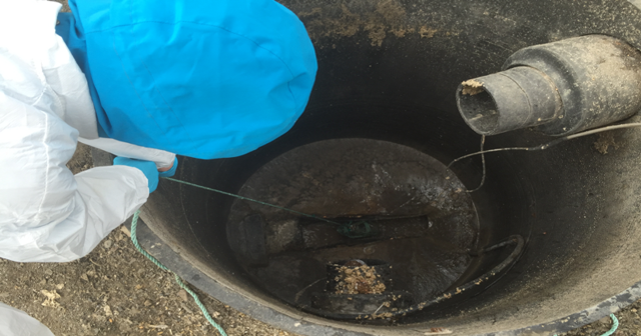Executive Summary
Even the early medical experts of the renaissance period already knew that the fecal and urinal excrement of an individual human were useful for the evaluation of the individual's health status. Today's patients are also often asked to bring a stool or/and urine sample for detailed medical examination. Recently experts have applied actively comprehensive chemical analysis of sewage for the demographic epidemiological examination of populations. Sewage today is considered a versatile tool for population studies and as a direct information link between heath, societal factors and cultural behavior of human populations if appropriate scientific methods are applied for such a multidisciplinary investigation.
Background
During the past years, modern quantitative trace analytical methods have been refined and optimized to a technological level allowing for multi-component quantification of trace levels of pharmaceuticals and other indicator compounds for individual and population health. Many thousands of modern households are usually connected to a sewage system collecting brown- (washing and cleaning) and black water (excrements, etc.) for subsequent cleaning in an appropriate waste water treatment facility. Sewage can, thus, be considered as integrated information source containing health, societal and behavioral information from a specific part of a human population (households connected to the respective treatment system). Appropriately translated by chemical analytical methods in combination with modelling and medical interpretation, this information can be used for appropriate regulation, health associated community-based decisions and political prioritizations.
Learning Objectives
Upon completion of the lecture, students will be able to explain:
- The multidisciplinary interpretation of the content of micropollutants and other indicator classes in sewage (biogenic substances, pathogens, microbiota, etc.) used for epidemiology studies of human populations.
- How pharmaceutical residues in centralized sewage are considered indicators for collectives’ stress in a population.
- How these information sources can help evaluate the illegal usage and application patter of illicit drugs in various population groups and how appropriate counter measures can be developed.
- Performing a population based exposure assessment for specific chemicals (i.e. response to dedicated regulatory measures).
- Validation and assessment of microbiome of a specific population group is possible with already available methods.
- The currently available and applied analytical technology allowing a comprehensive assessment of population indicators and that is will be actively used for community and population-based health assessments
Lecture
Sewage Epidemiology — A real-time Approach to estimate the Consumption of illicit Drugs in Brussels, Belgium
The sewage epidemiology approach was applied to a one-year sampling campaign in the largest wastewater treatment plant (WWTP) in Belgium to estimate the consumption of illicit drugs (e.g. cocaine). This manuscript shows that sewage epidemiology provides consistent and logical results and that it is a promising tool that can be used in addition to classical studies to estimate illicit drug use in populations.
VAN NUIJS, A. L.N. et al. (2011): Sewage Epidemiology — A real-time Approach to estimate the Consumption of illicit Drugs in Brussels, Belgium. In: Environment International: Volume 37 , 612-621. URL [Accessed: 02.08.2018]Working Upstream: How Far Can You Go with Sewage-Based Drug Epidemiology?
Sewage Reflects the Microbiomes of Human Populations
Tracking Human Sewage Microbiome in a Municipal Wastewater Treatment Plant
Pollution, Human Health tracked with Sewage Microbes
This online article summarizes the study of NEWTON, R. J. et al., 2015: Sewage Reflects the Microbiomes of Human Populations, In: mBio, Vol. 6 (2).
PENNISIS, E. (2015): Pollution, Human Health tracked with Sewage Microbes. Science Online URL [Accessed: 02.08.2018]Pharmaceuticals and Personal Care Products (PPCP): A Review on environmental Contamination in China
This review summarizes the current contamination status of different environment media, including sewage, surface water, sludge, sediments, soil, and wild animals, in China by PPCPs. The human body burden and adverse effects derived from PPCPs are also evaluated.
LIU, JL. and WONG, M.H. (2013): Pharmaceuticals and Personal Care Products (PPCP): A Review on environmental Contamination in China. In: Environment International: Volume 59 , 208-224. URL [Accessed: 02.08.2018]European Monitoring Center for Drugs and Drugs Addiction: Wastewater Analysis
In 2017 this Europe-wide study, which includes around 60 cities in total, revealed a picture of distinct geographical and temporal patterns of drug use across European cities. Twenty one cities have participated in at least five of the annual wastewater monitoring campaigns since 2011, which allows for seven-year time trend analysis of drug consumption based on wastewater testing. Following the success of this initial study, comparable studies were undertaken over the following four years, covering up to 19 European countries in 2017.
Sewage provides Insight into Human Microbiome
Sewage is an effective means to sample the fecal bacteria from millions of people, a new study has indicated. Researchers say the information gleaned from the work provides a unique opportunity to monitor, through gut microbes, the public health of a large population without compromising the privacy of individuals.
This online article summarizes the study of NEWTON, R. J. et al., 2015: Sewage Reflects the Microbiomes of Human Populations, In: mBio, Vol. 6 (2).
Hebert, G. (2015): Sewage provides Insight into Human Microbiome. ScienceDaily URL [Accessed: 02.08.2018]What our Sewage can teach us
Online article about US researchers that uncover trends in infectious diseases through analyzing wastewater samples.
KRISCH, J. A. (2014): What our Sewage can teach us. The New York Times URL [Accessed: 02.08.2018]The Plan to Test Cities’ Sewage for Drugs is a new Form of Mass Surveillance
Critical online article about scientists testing feces and urine in wastewater to find trends in illegal drug use.
FARAH, T. (2017): The Plan to Test Cities’ Sewage for Drugs is a new Form of Mass Surveillance. Motherboard URL [Accessed: 02.08.2018]Real-time Wastewater Analysis shows what drugs are being used where
When people take drugs, they end up in the water, either unchanged or broken down into specific metabolites. Increasingly, water can be tested to gauge how much drug use is going on in an area, and a new study shows that the level of illegal drugs being used in a community can be tested in real time, and potentially applied to help police narcotic use.
MAIN, D. (2014): Real-time Wastewater Analysis shows what drugs are being used where. Popular Science URL [Accessed: 02.08.2018]

